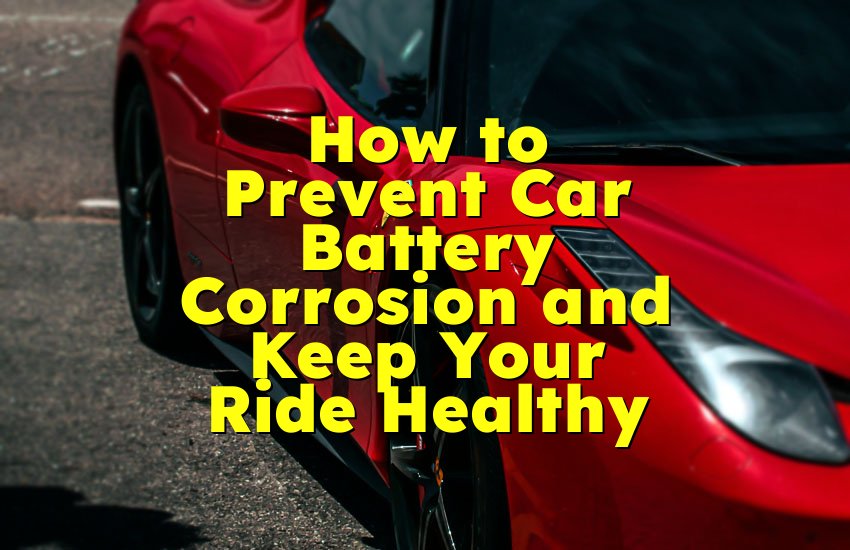As an Amazon Associate, I earn from qualifying purchases at no extra cost to you.
Car Heat Only Works When Driving
When the car heat only works when driving, it typically indicates an issue with the heating system at idle. This could be due to a malfunctioning thermostat or low coolant levels.
In most cases, the problem can be resolved by addressing these issues promptly. It is crucial to have your vehicle inspected by a mechanic to diagnose and fix the underlying problem to ensure your comfort and safety while driving. Neglecting the issue could lead to more significant and costly repairs down the line.
By addressing the heating system problem promptly, you can enjoy a comfortable and safe driving experience in your car, regardless of the speed.
Common Issues With Car Heat
Let’s take a look at some common issues that can cause your car’s heat to work only when driving. Identifying these problems can help you address the issue efficiently and get your car’s heating system back to proper functioning.
Thermostat Problems
A malfunctioning thermostat can result in insufficient heat being generated in your car. The thermostat is responsible for regulating the flow of coolant through the engine, and if it fails, it can cause the heat to work inconsistently or not at all.
Low Coolant
Low coolant levels can lead to inadequate heating in your car. If the coolant levels are low, the heat exchanger in the heating system may not receive enough hot coolant, resulting in lukewarm or cold air blowing through the vents.
Radiator Issues
Issues with the radiator can also affect the effectiveness of your car’s heating system. A clogged or malfunctioning radiator can impede the proper flow of coolant, leading to inadequate heat generation. It is essential to ensure that the radiator is functioning optimally to maintain the warmth in your car.
Troubleshooting Car Heat Problems
When your car’s heat only works when driving, it can be frustrating and uncomfortable. Understanding the key areas to troubleshoot can help resolve the issue effectively. Start with these steps to diagnose the problem and get your car’s heating system back on track.
Check Thermostat
A malfunctioning thermostat can often be the culprit behind inconsistent heat in your car. Ensure it is opening and closing correctly to regulate the engine temperature.
Inspect Coolant Levels
Low coolant levels can also lead to poor heating performance. Check the coolant reservoir and top it up if needed to maintain the optimal heat transfer in the system.
Examine Radiator
A clogged or damaged radiator can restrict the flow of coolant and affect your car’s heating ability. Inspect the radiator for any blockages or leaks that may be impeding proper heat circulation.
Inspect Heater Core
A malfunctioning heater core can result in insufficient heat being produced. Ensure there are no leaks or blockages in the heater core that could be affecting the distribution of warm air in your car.
Also Read: Car Ac Turns On And Off Randomly
Symptoms Of Car Heat Issues
Symptoms of Car Heat Issues:
Heat Only Works When Driving
If your car's heat only functions properly when the vehicle is in motion, it may indicate issues with the heating system that need to be addressed.
No Heat At All
A lack of heat coming from the car's vents suggests a more serious problem that requires immediate attention to ensure heating functionality.
Insufficient Heat
When the heat in your car feels weak or insufficient, it could be a sign of underlying issues affecting the heating system performance.

Credit: wowowow.com
See Also: How To Remove Lojack From My Car
Causes Of Heat Only Working When Driving
When your car heat only works when driving, it can be a frustrating and uncomfortable experience, especially during the cold winter months. There are several potential causes for this issue, and understanding them can help you diagnose and resolve the problem more effectively.
Cooling System Issues
Cooling system issues can contribute to the heat only working when driving. Low coolant levels, a faulty thermostat, or a malfunctioning water pump can hinder the proper circulation of hot coolant through the heater core, leading to a lack of sufficient heat at idle or low speeds.
Air Flow Restrictions
Air flow restrictions, such as a clogged cabin air filter or debris blocking the vents, can impede the airflow needed to distribute warm air into the cabin. This can result in the heat functioning properly only when the vehicle is in motion, allowing for natural air circulation.
Heater Core Problems
Heater core problems may also be the culprit. A clogged or malfunctioning heater core can prevent the efficient transfer of heat from the hot coolant to the air blowing into the cabin, leading to inadequate warmth when the vehicle is stationary.
Steps To Fix Heat Only Working When Driving
Check Coolant Levels: Ensure coolant is filled to the proper level to maintain heating efficiency.
Flush the Cooling System: Remove impurities from the system to prevent blockages and improve heat circulation.
Replace Thermostat: Install a new thermostat to regulate coolant temperature for consistent heating.
Check for Air Flow Restrictions: Inspect vents and ducts for any blockages that may hinder heat distribution.
Inspect Heater Core: Examine the heater core for any leaks or damages that could affect heat output.

Credit: m.youtube.com
Preventive Measures To Avoid Car Heat Issues
Regular maintenance and taking preventive measures are important to avoid car heat issues. By following these simple steps, you can ensure that your car’s heating system works efficiently and keeps you warm during your drives.
Regular Maintenance
Regular maintenance of your car’s heating system is crucial to prevent any potential issues. It is recommended to follow the manufacturer’s guidelines for servicing and maintenance intervals. Regularly checking the fluid levels, belts, hoses, and other components can help identify any potential problems before they escalate.
Flush The Cooling System Annually
Flushing the cooling system annually helps remove any dirt, debris, or contaminants that may have accumulated over time. This is especially important as the build-up can clog the system and hinder its ability to regulate temperature effectively. Flushing the system involves draining the old coolant and replacing it with fresh coolant.
Inspect And Replace Parts As Needed
Regularly inspecting and replacing parts of the heating system as needed can prevent car heat issues. The heating system consists of various components including the radiator, thermostat, water pump, hoses, and heater core. If any of these parts show signs of wear and tear or damage, it is crucial to replace them promptly to maintain optimal functionality.
- Inspect the hoses regularly for leaks, cracks, or bulges, and replace them if necessary.
- Check the radiator for any signs of corrosion or damage and replace if needed.
- Ensure the thermostat is functioning properly and replace it if it is not regulating the temperature accurately.
- The water pump should be inspected for any leaks or unusual noises, and replaced if necessary.
- If the heater core is clogged or damaged, it can affect the heat output in your car. In such cases, it is advisable to have it inspected and replaced if needed.
By following these preventive measures, you can maintain your car’s heating system in good condition, ensuring that the heat works efficiently even when driving. Regular maintenance, annual flushing of the cooling system, and timely inspection and replacement of parts can help prevent car heat issues and ensure a comfortable driving experience.
When To Seek Professional Help
When you are facing persistent heat problems in your car, it may be time to seek professional help. Complex repairs may be needed to address the issue effectively.
Persistent Heat Problems
If you find that your car’s heat only works when driving, and the issue persists even after attempting simple fixes, such as checking coolant levels and ensuring the thermostat is functioning, it’s recommended to consult a professional. Professional mechanics have the tools and expertise to diagnose and resolve persistent heat-related problems that may be more complex in nature.
Complex Repairs Needed
If you notice that the heat only functions when the car is in motion, and the problem remains unresolved despite your best efforts, the required repairs may be more intricate. Expert technicians can conduct thorough diagnostics to identify and address underlying issues, such as malfunctioning components or electrical faults, that require specialized knowledge and tools.

Credit: m.youtube.com
Conclusion
To sum up, troubleshooting your car's heating system involves several potential issues. From checking the coolant levels to inspecting the thermostat and heater core, you need to carefully handle the problem. It's essential to seek professional help if needed, as a well-maintained heating system ensures a comfortable and safe driving experience.











